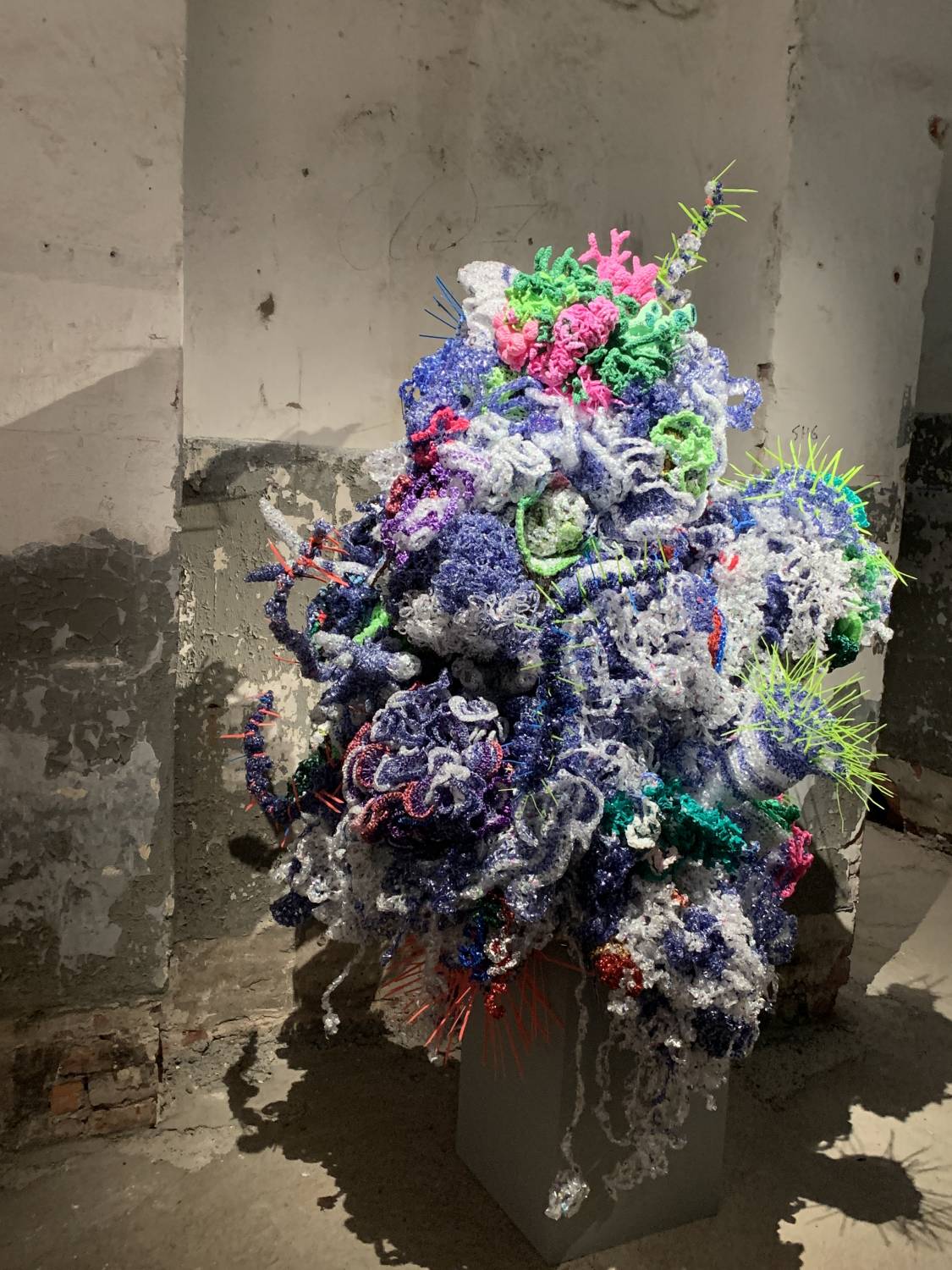Helsinki Biennial: The Same Sea – curated by Pirkko Siitari and Taru Tappola.
Giant coral monsters crocheted out of plastic cluster in a chapel-like space at the Helsinki Biennial. Over 18 months during Covid lockdown (from January 2020 to May 2021), 3000 Finns worked their hooks to collectively crochet a mind-blowing mass of corals out of fiber and recycled plastic. Vast in scale, this outpouring of Nordic creativity has been curated into two sibling installations for Finland’s inaugural biennial, taking place in downtown Helsinki and on Vallisaari island in the nation’s archipelago.
Helsinki Biennial 2021: The Same Sea, gathers together 40 artists and artist collectives whose work reflects on the interconnectedness of humans, the environment, and all living things. For the exhibition, Crochet Coral Reef creators Christine Wertheim and Margaret Wertheim worked with the people of Finland to generate the Helsinki Satellite Reef – to which nearly 3000 crafters contributed. Citizens from far-flung regions of Finland participated, and from all walks of life, including artists, teachers, school children, seniors, and a renowned Finnish designer.
In addition, the Wertheim’s have overseen construction of 4 new Coral Forest sculptures assembled from an epic array of plastic crochet pieces made by Helsinki Reefers out of recycled materials. At once ludicrous and serious, these totemic works draw our attention to the tsunami of plastic trash pouring into the world’s oceans threatening marine life everywhere – an artistic index of our plasticene age. Chief among the material used here was 200+ kilos of ribbon-like offcuts salvaged from the industrial production of toilet paper packaging. Sparkly, sinister, glittering with blue-grey elegance, this unlikely thread lends a distinctive color pallet to the sculptural suite. This Helsinki Coral Forest was co-curated by Margaret and Christine with a quartet of talented local ladies: Lotta Kjellberg, Elina Ahlstedt, Noora El Harouny and Tuija Maija Piironen (Team Finland). Recent news that oceanic plastic trash has become a serious vector for transporting invasive species around the globe renders the work all the more poignant.











